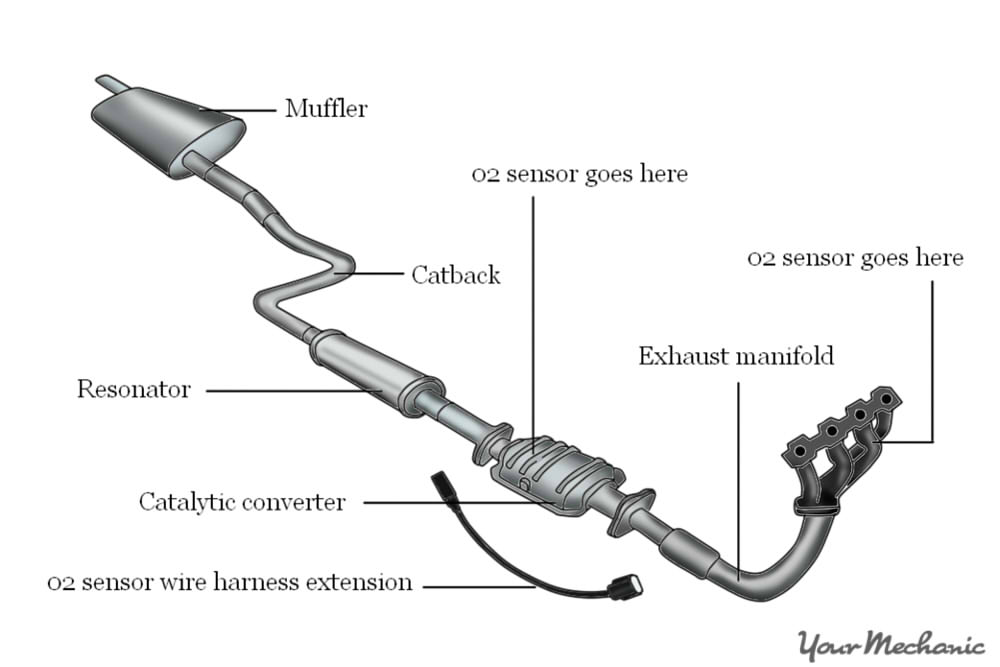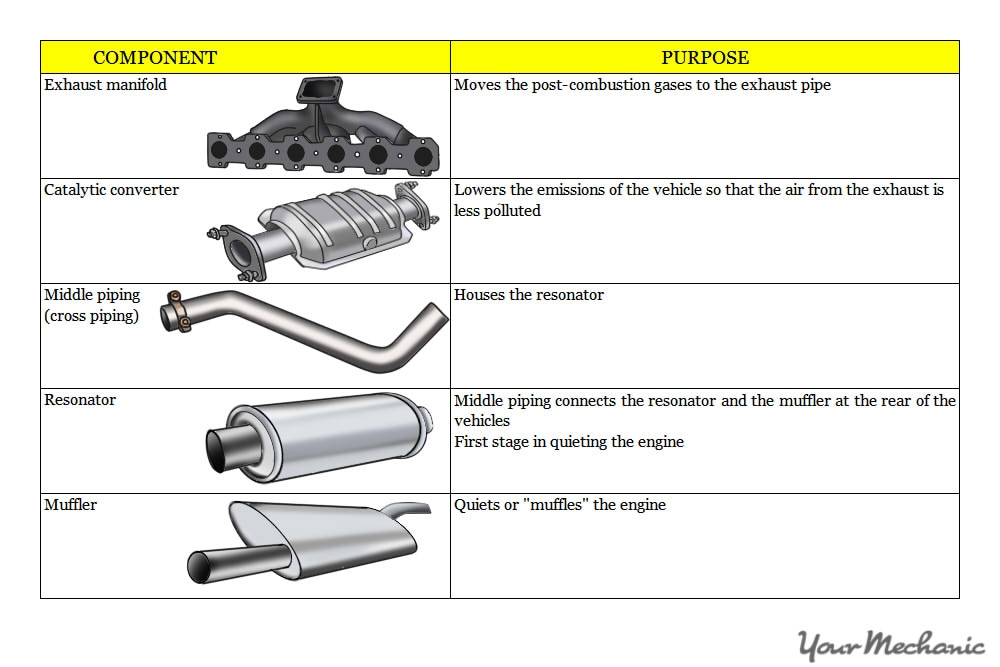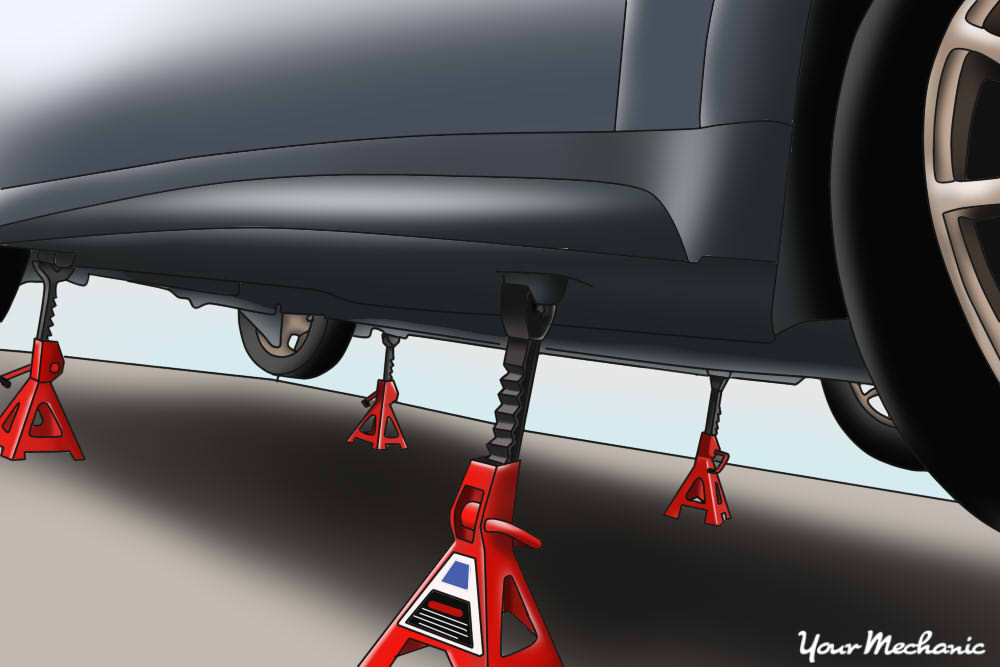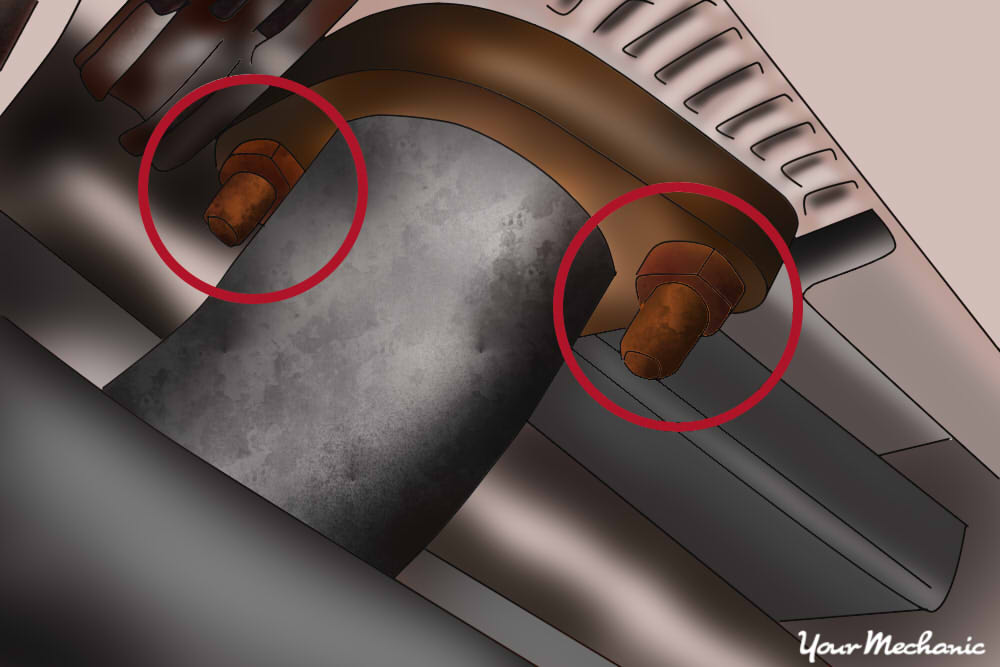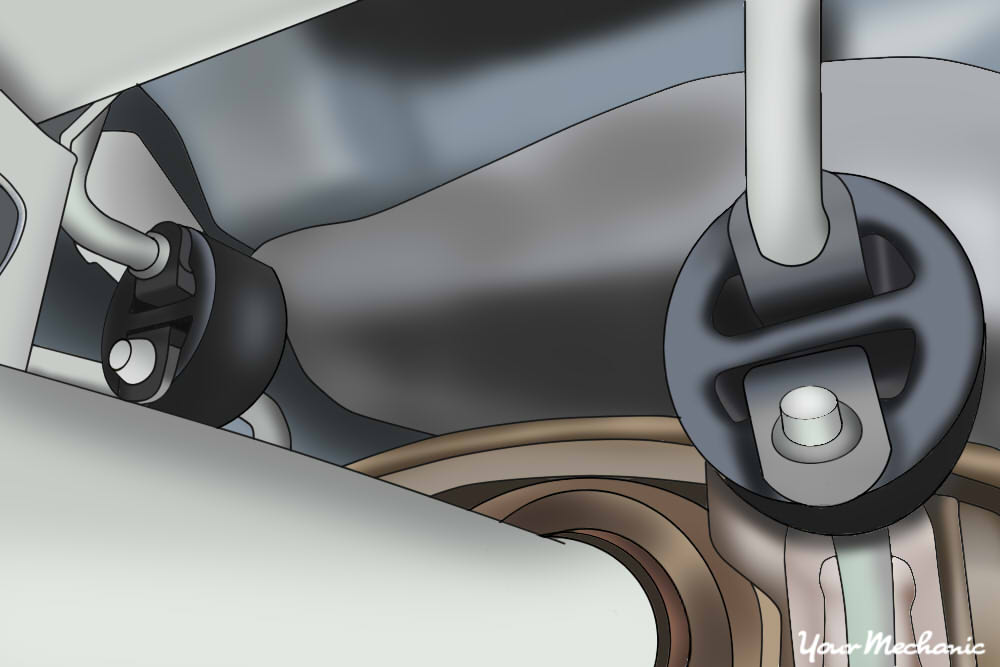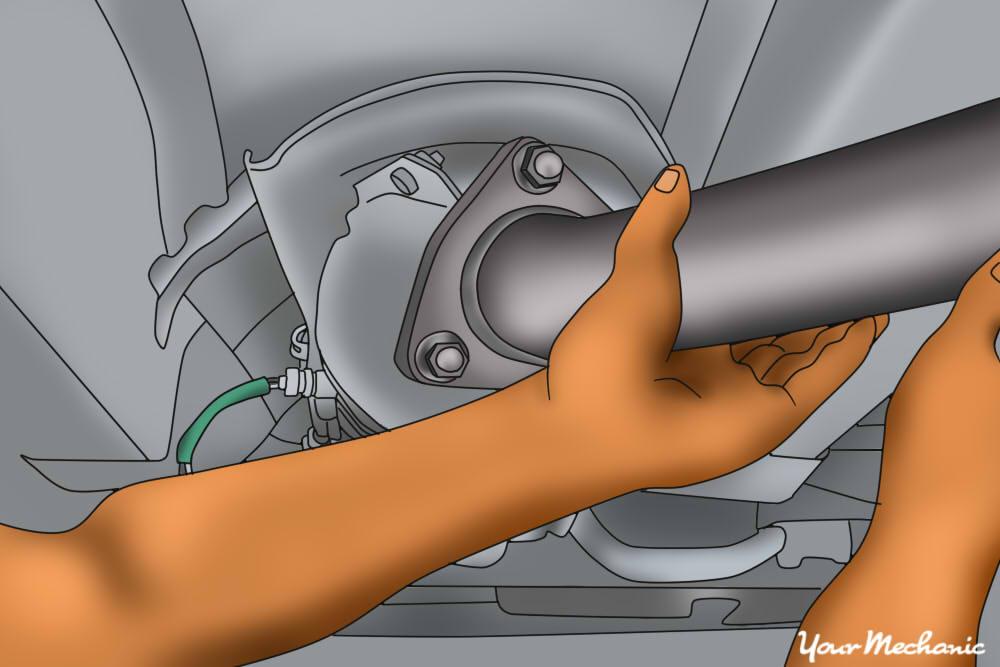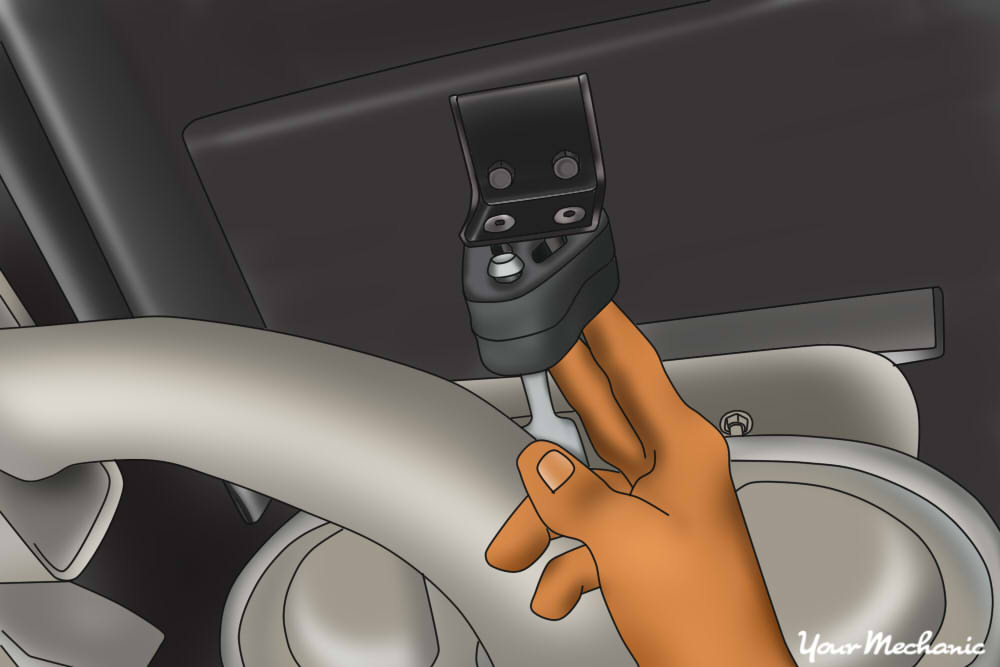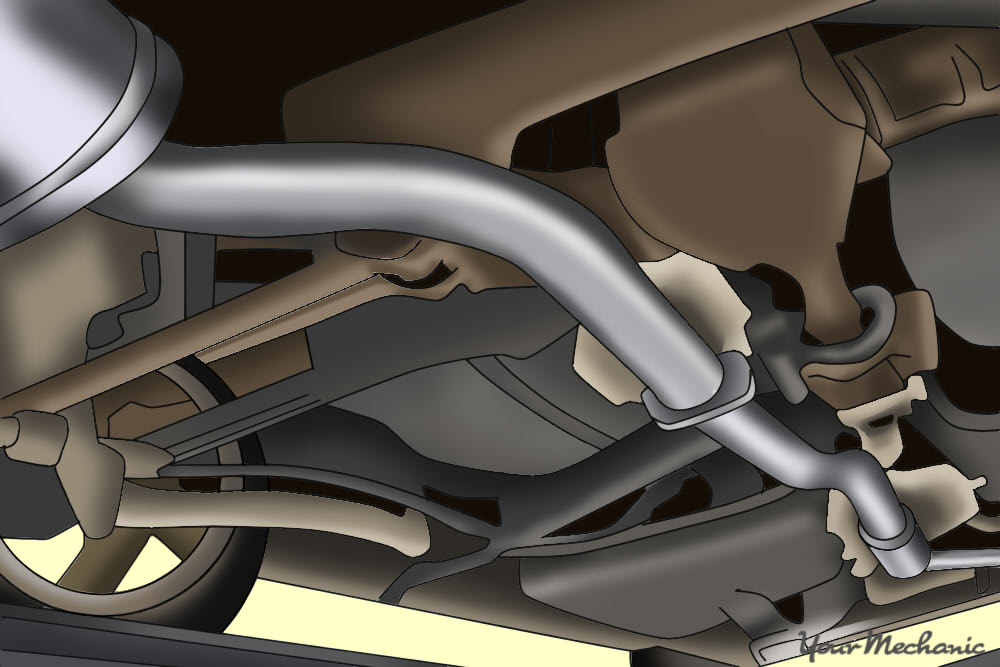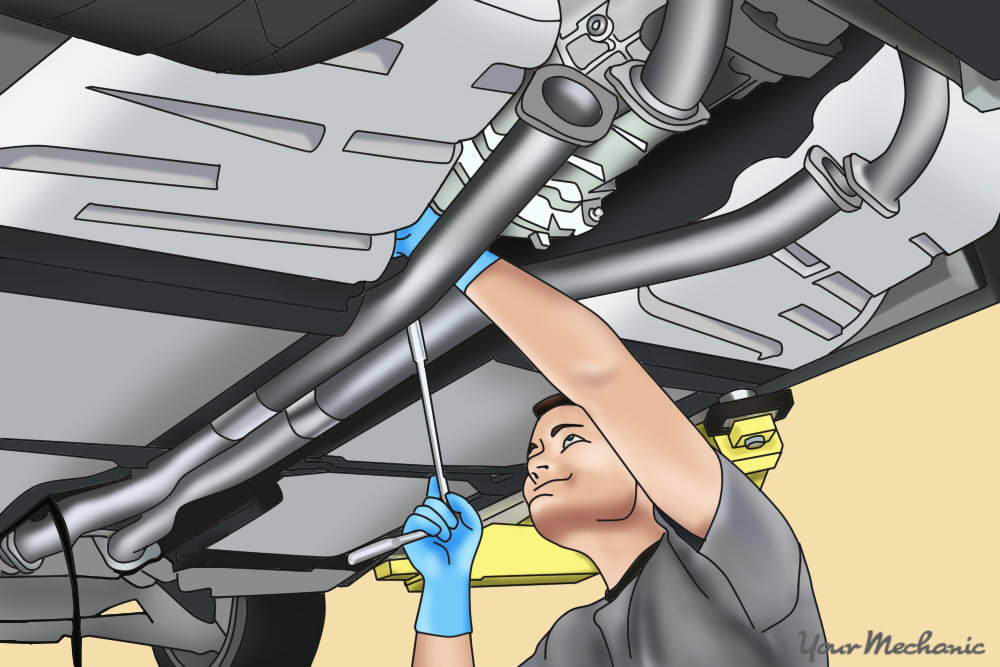

Your vehicle’s exhaust system plays a few very vital roles in keeping your car running efficiently and quietly. It aids in moving the exhaust gases created by the engine away from the front of the vehicle to the rear, where it is expelled. Certain components on the exhaust system, such as the resonator and the muffler, also have a hand in quieting the sound of the engine. Without an exhaust system every car would sound as loud as a race car.
If you want to install a new exhaust system, there is a good chance that you are either looking to upgrade your vehicle’s exhaust for sound and performance or perhaps the existing exhaust system on your car is old and rusted and is no longer doing its job efficiently. With the right tools, parts, and patience, you can perform an exhaust system installation yourself. This job is pretty straight forward as long as you are using exact-fit replacement parts.
If you are looking for a few extra horsepower and a deeper throatier sound, than this will be a fun upgrade that may raise a few curious eyebrows once the installation is complete.
Part 1 of 2: How the exhaust system works
There are five major components that make up the entire exhaust system.
- Tip: This article will talk about changing the exhaust system from the rear of the catalytic converter.
Part 2 of 2: Installing the exhaust system
Materials Required
- 6 pointed sockets - 10mm through 19mm.
- Floor Jack
- Gaskets - new and the required number for vehicle
- Gloves
- Hardware - new bolts and nuts to reassemble new exhaust
- Penetrating Oil (Best to use is PB Blaster)
- Ratchet
- Replacement bolt-on exhaust system
- Rubber exhaust hangers - new.
- Safety Glasses
Tip: Purchasing a replacement exhaust system kit will usually include the new hardware, gaskets and hangers. Be sure to purchase them separately if it does not.
Step 1: Purchase the exhaust. It is recommended to purchase a bolt-on exhaust for your specific vehicle. You can search around for the best deals for either a factory replacement or for a performance free flowing exhaust.
Tip: Most parts can be obtained from a local parts store, online, a local exhaust shop, or from your car maker's dealership.
Tip: Always be sure to check your local laws for installing an aftermarket exhaust to be sure it’s legal for road use or something. A good place to check is your state’s Bureau of Automotive Repair.
Step 2: Park on a flat surface. Ensure the vehicle is located on a flat surface and turned off.
Step 3: Raise the car. Safely raise the vehicle off the ground with the floor jack and safety jack stands. Position all four jack points under the vehicle.
Step 4: Spray the hardware. Generously spray all hardware (nuts and bolts) with PB Blaster and allow it to soak in for 5 or so minutes.
Step 5: Remove the muffler. Begin at the rear of the vehicle and remove the muffler first using the appropriate size 6 pointed socket and a ratchet.
There should be two bolts to remove from the muffler. Once the hardware is removed, slide the muffler off the rubber hangers and remove it from the car completely.
Set it aside. If your vehicle is equipped with two mufflers, you will repeat the process for the second muffler.
Tip: Be sure to not use 12-pointed sockets at this point. They may cause the nuts and bolts to round off, making them very difficult to remove.
Tip: spraying WD40 on the rubber hangers will assist in sliding off and on the components of the exhaust system
Step 6: Detach from the catalytic converter. Remove the bolted, middle part of the exhaust from the catalytic converter.
- The flange (external lip) connected to the catalytic converter end may have two or three bolts that are attached and will need to be removed. Once the hardware is removed, slide the piping off the rubber hangers and set it aside.
Step 7: Remove the rubber hangers. Remove the old rubber hangers from the vehicle and replace them with the new ones.
Step 8: Put on the new rubber hangers. Slip the new middle piping on to the new rubber hangers.
Step 9: Slip the new muffler on to the new rubber hangers.
Step 10: Put on the new gasket. Install a new gasket between the catalytic converter and the new exhaust. Use the new hardware to fasten this flange together. Tighten by hand.
Step 11: Fasten the flange. Locate the flange that adjoins the middle piping to the muffler. Install a new gasket and fasten the flange together with the new hardware by hand.
Step 12: Tighten the bolts. Fine tune the placement of the exhaust system. Tighten the bolts down at each flange and verify that the exhaust is hanging freely on the rubber hangers.
Be sure that it is not pressed against the vehicle's frame, gas tank, or the heat shields. Bolts should be tightened ¼ to ½ turn past snug.
- Tip: With the exhaust hanging and the hardware loose, you may have to twist, shake, or rotate the pipes into the desired placement. Be patient with this.
Step 13: Check your work. While the vehicle is still in the air, start it up and listen to the new exhaust. Check each flange for any sign of exhaust gases escaping. You should also be able to hear a leak if there is one.
- Warning: Feel for, but do not touch, for exhaust air escaping each flange. Be careful doing this as the exhaust gas temperature will get hotter the longer the vehicle is on.
Step 14: Return the car to the ground. After you have verified that there are no leaks, turn off the vehicle. Use a floor jack to remove the safety jack stands and lower the car back to the ground.
Take the car for a test drive.
Whether you replaced your exhaust due to damage or decided to upgrade it for performance, remember to always take caution when driving through driveways, speed bumps, and dips. The exhaust is exposed underneath the car and can be damaged if pulling into a driveway too quickly. If you live in areas that experience snow, be sure to have your undercarriage washed weekly during those winter months to prevent your exhaust and other components under the vehicle exposed to the elements from turning to rust.
If you aren’t comfortable replacing your car’s exhaust system yourself, ask a professional mechanic, such as one from YourMechanic, to help you replace your hangers, manifold gasket, or catalytic converter. Our mobile mechanics come to your home or office to inspect or repair your car at your convenience.



